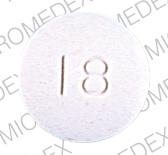Neomycin Side Effects
Medically reviewed by Drugs.com. Last updated on Sep 24, 2024.
Applies to neomycin: oral solution, oral tablet.
Important warnings
This medicine can cause some serious health issues
Common side effects of neomycin
Some side effects of neomycin may occur that usually do not need medical attention. These side effects may go away during treatment as your body adjusts to the medicine. Also, your health care professional may be able to tell you about ways to prevent or reduce some of these side effects.
Check with your health care professional if any of the following side effects continue or are bothersome or if you have any questions about them:
More common side effects
- irritation or soreness of the mouth or rectal area
- nausea or vomiting
Serious side effects of neomycin
Along with its needed effects, neomycin may cause some unwanted effects. Although not all of these side effects may occur, if they do occur they may need medical attention.
Check with your doctor immediately if any of the following side effects occur while taking neomycin:
Rare side effects
- any loss of hearing
- clumsiness
- diarrhea
- difficulty in breathing
- dizziness
- drowsiness
- greatly decreased frequency of urination or amount of urine
- increased amount of gas
- increased thirst
- light-colored, frothy, fatty-appearing stools
- ringing or buzzing or a feeling of fullness in the ears
- skin rash
- unsteadiness
- weakness
See also:
For healthcare professionals
Applies to neomycin: compounding powder, oral solution, oral tablet.
General adverse events
The most commonly reported side effects included diarrhea, nausea, and vomiting.[Ref]
Gastrointestinal
- Common (1% to 10%): Diarrhea, nausea, vomiting
- Frequency not reported: Increased fecal fat, increased salivation, steatorrhea, stomatitis[Ref]
Metabolic
- Frequency not reported: Decreased serum carotene, electrolyte disturbances, fall in xylose absorption, hypocalcemia, hypokalemia, hypomagnesemia, malabsorption syndrome[Ref]
Metabolic syndrome occurred with prolonged therapy, and included increased fecal fat, steatorrhea, decreased serum carotene, and a fall in xylose absorption. Steatorrhea and diarrhea occurring during metabolic syndrome can be very severe.[Ref]
Nervous system
- Frequency not reported: Neuromuscular blockade/blockage, neurotoxicity, nystagmus, paresthesia, vestibular toxicity[Ref]
Other
- Frequency not reported: Drug fever, ototoxicity, permanent bilateral ototoxicity[Ref]
Hypersensitivity
- Frequency not reported: Anaphylaxis, cross-sensitivity, hypersensitivity reactions[Ref]
Hepatic
- Frequency not reported: Increased bilirubin levels, increased hepatic enzyme levels[Ref]
Hematologic
- Frequency not reported: Blood dyscrasias, hemolytic anemia[Ref]
Psychiatric
- Frequency not reported: Confusion, disorientation[Ref]
Dermatologic
- Frequency not reported: Dermatitis, pruritus[Ref]
Renal
- Frequency not reported: Nephrotoxicity[Ref]
Immunologic
- Frequency not reported: Superinfection[Ref]
Superinfection occurred with prolonged therapy.[Ref]
Respiratory
- Frequency not reported: Respiratory paralysis[Ref]
References
1. (2001) "Product Information. Mycifradin (neomycin)." Emerson Laboratories
2. (2001) "Product Information. Neomycin (neomycin)." Pharma-Tek
Frequently asked questions
- What causes black hairy tongue?
- How long does it take for neomycin, polymyxin b and hydrocortisone ear drops to work?
- Can I use expired neomycin and polymyxin b sulfates, dexamethasone ophthalmic?
More about neomycin
- Check interactions
- Compare alternatives
- Pricing & coupons
- Reviews (2)
- Drug images
- Dosage information
- During pregnancy
- Support group
- Drug class: aminoglycosides
- Breastfeeding
- En español
Patient resources
Other brands
Professional resources
Related treatment guides
Further information
Neomycin side effects can vary depending on the individual. Always consult your healthcare provider to ensure the information displayed on this page applies to your personal circumstances.
Note: Medication side effects may be underreported. If you are experiencing side effects that are not listed, submit a report to the FDA by following this guide.

